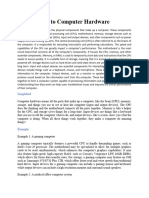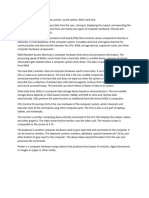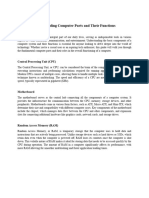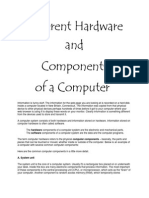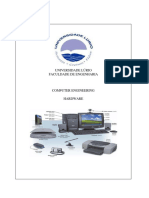0% found this document useful (0 votes)
6 views1 pageWhat Are The Computer Hardware - Brave Search
Computer hardware encompasses the physical components of a computer system, divided into internal and external categories. Internal components include the motherboard, CPU, RAM, storage drives, GPU, PSU, and cooling systems, while external components, or peripherals, consist of input devices, output devices, and other external devices. Together, these components enable the essential functions of input, output, processing, and storage in a computer system.
Uploaded by
jabirhowardCopyright
© © All Rights Reserved
We take content rights seriously. If you suspect this is your content, claim it here.
Available Formats
Download as PDF, TXT or read online on Scribd
0% found this document useful (0 votes)
6 views1 pageWhat Are The Computer Hardware - Brave Search
Computer hardware encompasses the physical components of a computer system, divided into internal and external categories. Internal components include the motherboard, CPU, RAM, storage drives, GPU, PSU, and cooling systems, while external components, or peripherals, consist of input devices, output devices, and other external devices. Together, these components enable the essential functions of input, output, processing, and storage in a computer system.
Uploaded by
jabirhowardCopyright
© © All Rights Reserved
We take content rights seriously. If you suspect this is your content, claim it here.
Available Formats
Download as PDF, TXT or read online on Scribd
/ 1







